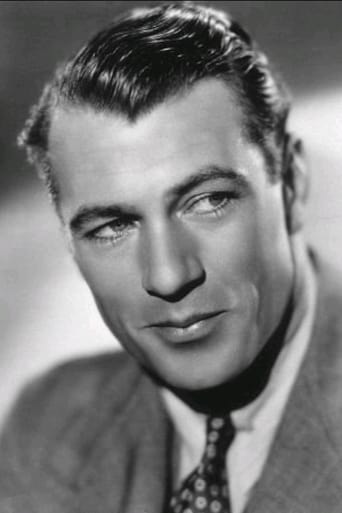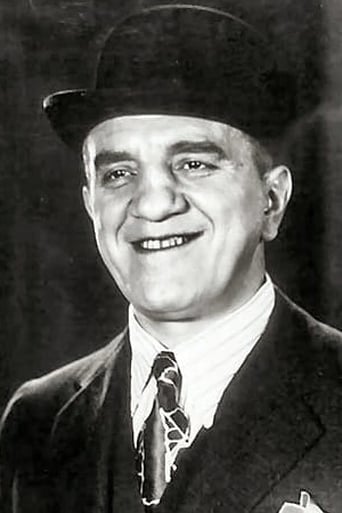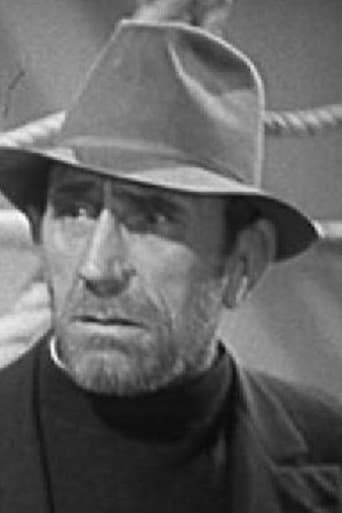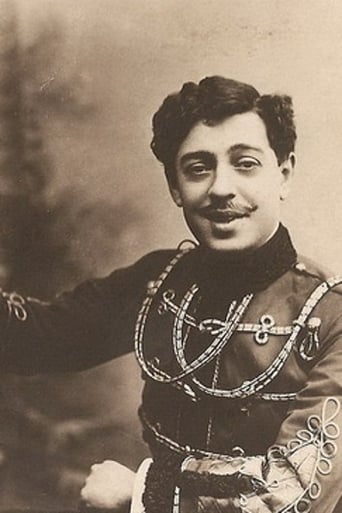Borserie
it is finally so absorbing because it plays like a lyrical road odyssey that’s also a detective story.
Salubfoto
It's an amazing and heartbreaking story.
InformationRap
This is one of the few movies I've ever seen where the whole audience broke into spontaneous, loud applause a third of the way in.
Rosie Searle
It's the kind of movie you'll want to see a second time with someone who hasn't seen it yet, to remember what it was like to watch it for the first time.
wmorrow59
In his lifetime Victor Fleming was recognized as one of Hollywood's top directors, proficient in every genre and a molder of top stars. He was also something of a star himself: handsome, dashing, and a man's man as well as a lady's man. Today he's best known as director (in part) of both The Wizard of Oz and Gone With the Wind, shot back-to-back in the course of that miraculous Hollywood year of 1939. Yet somehow, despite his vivid personality and impressive track record, Fleming himself has all but vanished from film history. For a number of reasons he has never been as celebrated as such contemporaries as Howard Hawks or Raoul Walsh. At long last, however, that situation is changing. The first full-length biography of Fleming (written by Michael Sragow) was published in 2008, and in March 2010 Film Forum in NYC devoted a two-week festival to the director's work. It was at Film Forum that I was fortunate enough to see Fleming's The Wolf Song, a rare late silent feature starring Gary Cooper and Lupe Velez.On its original release in March 1929 this film was primarily silent with a few talkie sequences in which Cooper, Velez, and crooner Russ Colombo speak and sing. Unfortunately, the sound sequences do not survive. The sole surviving negative of The Wolf Song, held by the Library of Congress (and from which the print shown at Film Forum was made) is entirely silent and runs about an hour. It's rough in places, with stretches of visible decomposition and a couple of continuity jumps along the way, but the story is straightforward and easy to follow.The time is 1840. Cooper plays a young adventurer named Sam Lash who heads west -- one step ahead of a shotgun wedding -- and becomes a trapper, roughing it in the mountains with two grizzled cohorts. (One of them, a plug-ugly named Gullion, is played by Louis Wolheim, who was so memorable as the tough sergeant in All Quiet on the Western Front.) In Taos Sam encounters a beautiful, well-bred but restless woman named Lola (Lupe Velez), who is tired of living with her over- protective parents. Sam and Lola meet at a dance, and, like Romeo and Juliet, fall in love instantly. Naturally, her parents object, and just as naturally, the young couple choose to elope. They marry and set up housekeeping together, but soon Sam is the restless one, for he hears "the wolf song" of the mountains calling. He deserts Lola and heads for the hills, but after some harrowing adventures returns to her full of remorse, having learned the hard way that love is stronger than the lure of the wilderness.The story could hardly be simpler, and in bare outline may not sound especially interesting, but The Wolf Song exerts a strong pull. Despite the battered condition of the surviving material it's clear that the cinematography was first-rate, not only in capturing the western vistas, but for preserving the extraordinary beauty of both Lupe Velez and Gary Cooper. They certainly made an attractive couple (off-screen and on), and their first dance together is mesmerizing. They truly heat up the screen. Cooper also appears nude, seen mostly from behind, in a skinny-dipping sequence that wouldn't have made it past the Breen Office a few years later. Velez is so gorgeous it's hard to believe that her husband would even consider leaving her to hang out in the mountains with two ugly old geezers, but it's a credit to Cooper's underrated abilities as an actor that he manages to convey a genuine sense of personal turmoil over this decision. Director Fleming boosts this central, internal conflict with a well-handled visual effect: after Sam leaves Lola and is sleeping alone at his campsite, obviously troubled and missing her, a ghostly Lola joins him, snuggles alongside him and nuzzles her face against his -- and then vanishes. Sam immediately resolves to return to her and seek her forgiveness. And we can see why! Fleming brings an unusual degree of intensity to the love scenes that carries over to the fights: a barroom brawl between Wolheim and his sidekick (Constantine Romanoff) is surprisingly violent, though neither seems much worse for the wear when it's over.It's unfortunate that The Wolf Song is incomplete; this becomes especially noticeable towards the end, as Sam journeys back from the mountains. He arrives in Taos without his horse and visibly wounded, but it's not clear how this happened. (From what I gather Sam is attacked by Indians in the woods en route to Taos, but that scene is among the missing.) Additionally, supporting player Russ Colombo is not visible at all in the surviving print, so it may be that he appeared only in the lost sound sequences. Still, what survives is an interesting drama that bolsters the contention of biographer Sragow that Fleming had a crucial influence on Cooper's screen persona and subsequent career. Cooper exudes star presence here. It's all the more baffling that one contemporary review, by the anonymous critic from Motion Picture News, asserts that "Gary is far from being a lady killer in his make-up in this offering and it is difficult to visualize this picture adding to his lists of conquests among the fair fans." I must disagree: Cooper looks great in The Wolf Song, and I'd imagine he set more than a few hearts a-flutter when this film went into release. Perhaps the critic from Motion Picture News stepped out for popcorn during the skinny-dipping sequence? In any case, after this project, the director and his male lead re-teamed for the all-talkie Western The Virginian, a smash hit that firmly set Gary Cooper's course forever after. We can thank Victor Fleming, and it's good to know that he's finally getting recognition for his valuable contribution to the movies, not only in his best known works but also such neglected yet worthy films as The Wolf Song.
bbcmacbear
This was shown tonight at Film Forum, NYC so possibly others will be posting.Apparently the only known print in the world is held by LOC (with a negative). When there are no picture problems, the image is pristine and glowing, but there is a lot of nitrate decomposition, mostly during intertitles. And it's only about 55 minutes- the part-talkie version, since lost, apparently had Coper and perhaps his buddies singing (campfire songs?) A Paramount film + Lib of Congress only = no one ever sees this- get a TCM channel of your own already, Paramount! And don't suck like Fox Movie Channel! The plot summary at the top of IMDb's entry is accurate. Lupe Velez is pale and lovely and there are many shots of her bosom heaving rapidly as she is confronted with the proximate Cooper. There are nice love scenes and a dance scene when they meet. Cooper is bronzed and a little younger than we usually see him and photographed more crisply and lovingly than in THE VIRGINIAN of the same year. He wears an unusual curved-up cowboy hat and his upper torso is seen from behind as he shaves by a stream- but certainly not full-frontally in this print at least, as suggested in IMDb's entry. It's a nice film to get to see for the first time but there isn't that much to it, especially at such a short running time.
F Gwynplaine MacIntyre
No wolves are seen nor heard in "The Wolf Song". Supposedly, this phrase refers to the lure of the wilderness. In fact, during Hollywood's transition from silence to sound, many part-talkies were given auditory titles: "The Bat Whispers", "The Ghost Speaks". This is one more noisy title."Wolf Song" was originally released in two versions: silent and part-talkie. The talkie version added a character played by handsome crooner Russ Columbo, and two songs: "Mi Amado" (sung by Lupe Velez) and "'Yo Te Amo' Means 'I Love You'" warbled by Velez, Columbo and Gary Cooper! No prints of the talkie version are known to survive. Columbo wasn't in the silent version.I viewed the Library of Congress's poorly-restored dupe of a silent print which was severely damaged and incomplete. Enough survives to show that this film was nobody's finest hour.Cooper, only 28, is so gaunt here he looks like Clint Eastwood! He's extremely handsome in this film, though lumbered with a bizarre frizzy hairstyle. Cooper is seen entirely nude as he shaves and washes in a river: from the neck down, he seems to be totally hairless. He gives a mostly excellent performance, although in the later scenes -- wounded by hostile natives -- his character becomes strangely masochistic: a characterisation Cooper wouldn't repeat until "They Came to Cordura", 30 years later.I find Lupe Velez sexy in some of her 1930s films, but not in the 1920s. Here, she's doll-pretty rather than woman-pretty. Her eyebrows are plucked beyond all redemption, her cupid's-bow lips are framed by ludicrous spitcurls. (The Mexican Spitcurl?) She wears elaborate tiered dresses which make her resemble that ridiculous doll some people use as a toilet-roll cover. In one scene, Velez runs in a wedding-cake dress while the undercranked camera speeds up her movements: I laughed as if watching a slapstick comedy. Reportedly, Velez and Cooper were lovers offscreen ... yet they show no sexual chemistry in their scenes here. Cooper is more erotic here in an earlier scene, as he lifts little Leone Lane onto a table. Velez's role should have been played by Dolores Del Rio.The best performance here is given by Constantine Romanoff as one of Cooper's two partners. (Louis Wolheim is marginally less excellent as the other.) I dislike it when actors in period movies display modern dentition: as a frontiersman in 1840, Romanoff shows off his grotty teeth to splendid advantage.SPOILERS NOW. Here's the whole plot. In 1840, rough-hewn trapper Cooper meets Velez, the patrician daughter of a Mexican nobleman. Cooper and Velez are instantly attracted to each other. Defying her father, she runs off with Cooper. The film takes pains to show them deferring their sexual urges until a priest marries them in church and we see Cooper slipping a ring onto Velez's finger. (We see this shot TWICE.) But Cooper can't settle down; the wilderness is calling. Velez warns him: if he leaves her, she won't take him back. He leaves, and she returns to her father. The local Amerindians kill Cooper's horse and abandon him in the desert. He staggers a laughably long distance to Velez's father's hacienda, where Cooper's and Velez's love for each other overcome all obstacles. Fade out. Hoo boy.There are a few good moments. I liked one erotic image: Cooper is lying down on his bedroll, alone, then a double-exposure image of Velez quietly joins him. Earlier, there's a deft flashback to establish Cooper's character, but this was done better a couple of years earlier in "Legion of the Condemned". Some of the outdoor scenes here are quite beautiful."The Wolf Song" is simply a poor film, made during Hollywood's very awkward transition from silents to talkies. I would be pleased if a print of the part-talkie version surfaces, but this movie is proof that not every "lost" film is a masterpiece. My rating for this one is just 2 out of 10.
Single-Black-Male
During this film, Cooper was having an intense love affair with his leading lady, Lupe Velez. A bit of Mexican fire is an novelty to a westerner, so I can understand his emotional drive. Her real name was Maria Guadalope Velez, and she earned $14,000 whilst Cooper earned $2,750.




